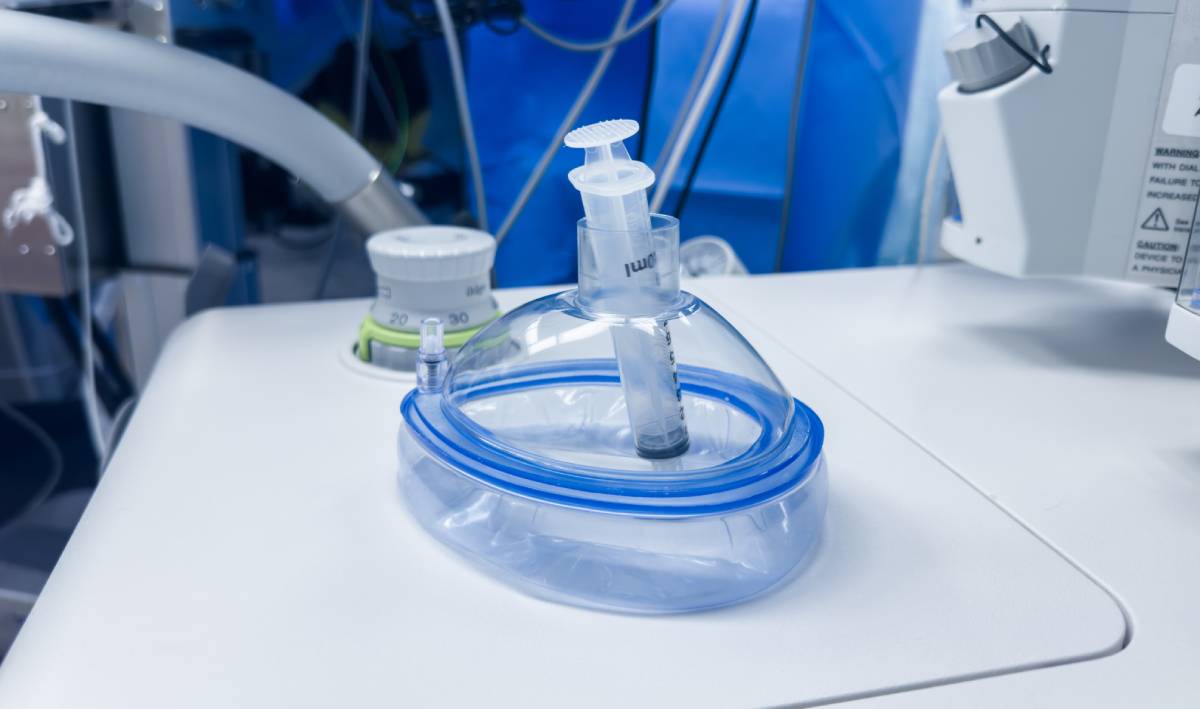During surgery, patients can be exposed to a wide range of medications, including some administered preoperatively for anesthesia, some given for intraoperative complications, and some utilized for postoperative recovery. The many different drugs used—primarily anesthesia agents such as propofol, sevoflurane, isoflurane, desflurane, halothane, thiopentone, etomidate, nitrous oxide, midazolam, and ketamine—raise the risk of developing an allergy or having allergic reactions that can complicate patient outcomes. These allergic reactions, although rare, carry significant risks, including increased risk of developing more serious conditions, mortality, higher healthcare costs, and more. To identify and mitigate adverse reactions related to an allergy, anesthesiologists and surgeons must be vigilant in considering the cumulative effects of anesthesia agents given to the patient.1
Allergic reactions, which are immunologic by nature, may include mild symptoms, such as urticaria (e.g., hives), erythema (e.g., skin redness), and intense itching; severe reactions, such as respiratory distress or angioedema (e.g., painful swelling); and potentially fatal anaphylactic responses, hypotension, and loss of consciousness.2 Allergic reactions may be categorized by immunoglobin E (IgE)-mediated type I reactions and T-cell-mediated type IV responses. Type I responses occur after the release of mediators, such as histamine from mast cells and basophils, which leads to the binding of IgE antibodies to antigens. Intracellularly, this reaction takes place immediately; however, it can take 1-4 hours before physiological symptoms appear. Thiopentone anesthesia and certain neuromuscular blockers have been shown to elicit IgE-mediated allergic reactions.1 On the other hand, type IV reactions are mediated by the T cells that are exposed to antigens expressed by the Langerhans cells, and the reaction occurs when the T cells are once again exposed to the same antigens. These reactions are typically delayed, taking between 24–72 hours to fully manifest.3
Ester-type local anesthesia is more likely to provoke Type IV reactions in patients with an allergy, which is likely due to para-aminobenzoic acid (PABA), a metabolite of the ester group that has strong allergenic properties. Methyl-paraben and propyl-paraben can also induce allergic responses due to their metabolism, which produces compounds like PABA. As a result, amide-type anesthetics are more commonly used when applying a local anesthetic. Lidocaine, a local anesthesia, is typically administered in a form that contains epinephrine, a vasoconstrictor meant to extend the duration of lidocaine anesthesia.4 In a case study report, a female patient experienced dizziness and systemic urticaria after receiving lidocaine containing epinephrine for root canal treatment. She was determined to be hypersensitive to lidocaine and further testing showed she had similar allergic reactions to ropivacaine and articaine.3
For patients who have a history of allergy to local or general anesthesia, careful and thorough assessment of their response to medications is paramount in preoperative care. Allergy tests, such as skin pricks or intradermal testing, can help the healthcare team identify which anesthetic agents will not elicit an allergic reaction from the patient.5 However, if no such drug is available, the use of general anesthesia may be unavoidable, and steps must be taken to mitigate the extent and impact of the reaction.
Medications administered for anesthesia present a risk for allergic reactions, which can present with anything from mild symptoms like hives to life-threatening effects like anaphylaxis. With the complex nature of these reactions, including both Type I IgE-mediated responses and Type IV T-cell-mediated reactions, it is of paramount importance that anesthesiologists and surgeons carefully consider their patient’s allergic history during preoperative planning. Through rigorous allergy testing, the healthcare team can identify potential allergens and minimize the risk of adverse reactions. By prioritizing patient safety, providers can improve patient outcomes and reduce the risk of complications related to allergic reactions from anesthesia.
References
1. Baldo, Brian A. “Allergic and Other Adverse Reactions to Drugs Used in Anesthesia and Surgery.” Anesthesiology and Perioperative Science, vol. 1, no. 2, June 2023, p. 16. https://doi.org/10.1007/s44254-023-00018-2
2. Speca, Steven J., et al. “Allergic Reactions to Local Anesthetic Formulations.” Dental Clinics, vol. 54, no. 4, October 2010, 655 – 664.
3. Lee, Jiseon, et al. “Dental Anesthesia for Patients with Allergic Reactions to Lidocaine: Two Case Reports.” Journal of Dental Anesthesia and Pain Medicine, vol. 16, no. 3, Sept. 2016, pp. 209–12. jdapm.org, https://doi.org/10.17245/jdapm.2016.16.3.209
4. Noormalin A., Shahnaz M., Rosmilah M., Mujahid S.H., Gendeh B.S., “IgE-mediated Hypersensitivity Reaction to Lignocaine – A Case Report.” Trop Biomed 2005; 22: 179-83
5. Grzanka, Alicja, et al. “Hypersensitivity Lo Local Anesthetics.” Anaesthesiology Intensive Therapy, vol. 48, no. 2, 2016, pp. 128–34. https://doi.org/10.5603/AIT.a2016.0017
